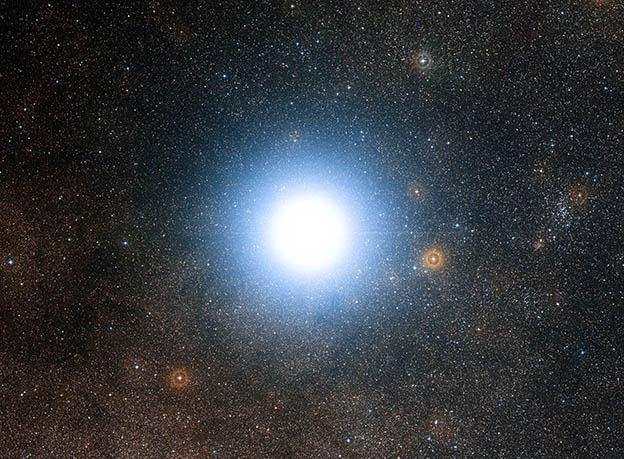Scientific American highlights astrophysicist’s search for better planets

Alpha Centauri, the closest star system to the Solar System. Astrophysicist René Heller of McMaster’s Origins Institute says our planet may not be the most ideal place for life and scientists need to consider non-Earth-like, so-called “superhabitable” planets.
Do humans inhabit the best of all possible worlds?
Astrophysicist René Heller of McMaster’s Origins Institute says we might not.

In a paper published in January 2014, Heller described “superhabitable” planets – non-Earth-like places that would probably be two or three times more massive and much less mountainous than Earth.
He says scientists need to consider these planets in their search for extraterrestrial life.
“The Earth just scrapes the inner edge of the solar system’s habitable zone – the area in which temperatures allow Earth-like planets to have liquid surface water,” Heller said in a 2014 interview. “So from this perspective, Earth is only marginally habitable. That led us to ask: could there be more hospitable environments for life on terrestrial planets?”
Heller’s work is featured on the cover of the January issue of Scientific American, as part of a feature called “The hunt for planets better than Earth.”
“Because earthlings still know of just one living world – our own – it makes some sense to use Earth as a template in the search for life elsewhere…” he writes. “Now, however, discoveries of potentially habitable planets orbiting starts other than our sun – exoplanets, that is – are challenging that geocentric approach.”

